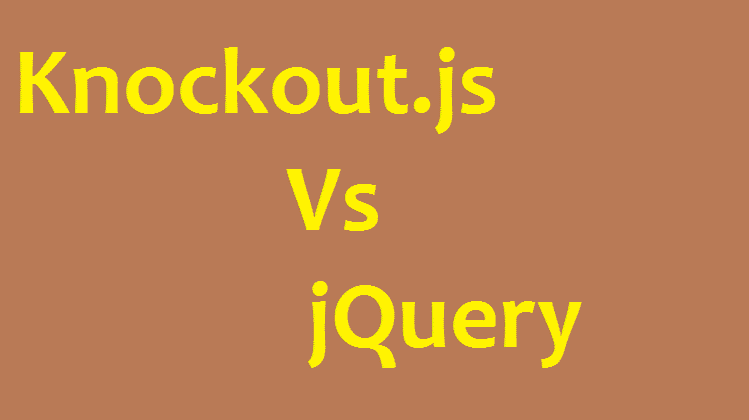Knockout.js is another JavaScript library just like jQuery is. While Knockout is an MVVM framework, jQuery is DOM manipulation framework. The main purpose behind bringing jQuery to the market is to make JavaScript developer-friendly. On the other hand, the purpose behind Knockout is to bind raw data to a model which is more technical even though it is not meant to make the job easy for the developers. One should not really compare them as they have their reasons to exist. It is all about using the right one for the right job. Yet for the sake of the user, the following is what both these different based on what they bring on the table for the developers.
Application – As stated earlier, you should know when to use which of them to get the job done efficiently and quickly. Knockout is the go-to language if your application needs some encapsulation. In this way, the unit testing of the JavaScript part will be faster and more efficient as you have to test the ViewModel without going into the HTML part. PhantomJS works perfectly with Knockout based JavaScript development.
Knockout is also a perfect choice when you have to reuse a certain part of the model in some other part of the application irrespective of the changing HTML code. Furthermore, if you need to serialize the entire model to JSON so that you can send it over to the server, Knockout is a perfect choice.
On the other hand, jQuery is a perfect choice when there is a lot of Ajax implementations and requests in your program. Moreover, if the application has effects and animations, and a lot of DOM manipulation, jQuery is the best choice to opt for.
Structure –
Knockout.js use a unique design pattern called MVVM which stands for Model-View-ViewModel. The Model extracts the data from the back-end and represents them visually through UI called View. The ViewModel is an intermediary between the Model and the View that manages binding data, sending data, updating data and data connection. Any change in the backend is automatically reflected in the front end and vice versa. Knockout.js is ideal for data-driven interfaces as in dynamic websites. jQuery is a replacement for an inconsistent DOM API. It is more about manipulating the elements and event handlers. There is no concept of the data model in jQuery. Things get easier with Knockout especially when there is overlapping behavior in the UI. Knockout eliminates the inconsistency that used to be generated using jQuery.
New Features in Knockout.js –
Binding – The most important feature of Knockout is its ability to bind the elements of UI to the data model in the simplest way. Using JavaScript or JQuery to manipulate DOM can sometimes lead to broken code in case you change the DOM hierarchy. It is very common in dynamic applications. With Knockout’s declarative binding, even when you change the hierarchy, the bindings stay the same. This feature is lacking in jQuery, and it is the sole reason for the rise of Knockout.js.
Dependency – Dependency tracking is another awesome feature the Knockout brings on the table. With this feature, your application will automatically update the relevant parts of the UI of the application whenever there is any change in the data model. Therefore, the dependency is maintained, and there is no delay in updating. This helps to maintain the synchronization of the backend and frontend. This is done by using two-way data binding using variables called observables. There is no need to worry about handlers and listeners anymore for tracking the dependency.
Templating – When you are developing a complex application especially when it has the future potential of scalability, you need a proper view model. The template engine of Knockout is native, and you can choose the right template and customize everything for a proper interaction of the data and template.
In fact, this feature also enables the developers to reuse lines of codes in different parts of the application. Moreover, Knockout has integration feature with other libraries and technologies which is why it has become a favorite among developers in a very short time. However, the large section of the community still believes the JQuery has cleaner templates than Knockout.
Final Words –
Knockout.js is not a replacement for jQuery as you have understood from their application part. There is not much of a competition between the two, and a developer is supposed to work with them both side by side. jQuery saves the develops a lot of precise time by not having to write boring JavaScript for various events like animations. Knockout solves some of the core problems arising from jQuery and data binding in JavaScript as a whole. There is also minimal coding requirement, and many things are implemented automatically in the background such as the automatic reflection in the IU when the data is updated in the backend. Therefore, both of them are complementary to each other.


